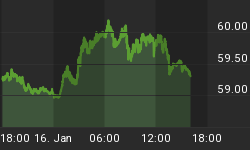Sometimes I think Alan Greenspan will be remembered more for his phrase making than his monetary policy making. One of his latest phrases is the bond market "conundrum." What explains the decline in U.S. bond yields in the face of Fed-induced increases in money market interest rates and rising U.S inflation? Roger Altman explains the conundrum for us in an op-ed piece in the June 21st edition of The Wall Street Journal. But is his explanation right? Only half right, in my opinion.
Altman lays out three hypotheses to explain the decline in bond yields in the past year. The first hypothesis is that the bond market has simply overshot fundamentals, as financial market prices are wont to do. Altman rejects this hypothesis on faith. Altman's second hypothesis is that the bond market investors are anticipating weaker growth in economic activity than are the gaggle of Blue (Cow?) Chip economic forecasters. He rejects this hypothesis on the basis of authority. Whose authority? Alan Greenspan's. To quote Mr. Altman: "Yet, the positive economic signs, as detailed in Mr. Greenspan's latest testimony, are far more prevalent and make this [slower-than-consensus economic forecast] a dubious case." Mr. Altman accepts the judgment of Alan Greenspan, the same Alan Greenspan who wrote a letter of support for Charles H. Keating before Keating was indicted and convicted for S&L fraud, who only belatedly identified the "head winds" (another example of Greenspanish) of bank capital inadequacy in the early 1990s, who did a great Alfred E. Neuman impression during the NASDAQ bubble of the late 1990s, and who, again belatedly, has noted that some residential real estate markets are exhibiting some "froth" (again with the Greenspanish). The hypothesis that Altman settles on is the global saving glut.
I say that Altman is only half right because the weaker-future-growth hypothesis and the global saving glut are not necessarily mutually exclusive. The glut, in conjunction with a Fed intent on pushing up the nominal fed funds rate to some historical level in relation to inflation, could be responsible for slower-than-forecast economic growth. Let me explain.
If, in fact, the rest of the world chooses to save more and chooses, all else the same, to place a large part of its saving in dollar assets, two financial market variables will be affected - U.S. bond yields and the dollar. The increase in foreign funds invested in the U.S. means that the rest of the world wants to buy our bonds, not our Buicks. This will push down the equilibrium structure of U.S. interest rates and push up the foreign exchange value of the dollar. The rising dollar - at least, rising relative to what it otherwise would have been - will inhibit U.S. exports and encourage U.S. imports. This is one element that would slow U.S. production of goods and services. If the structure of U.S. interest rates were allowed to fall to its new lower equilibrium level, growth in U.S. production and aggregate demand need not slow, as the lower interest rate structure would induce more borrowing, production and spending on the part of U.S. economic entities.
Now, enter a Fed that does not recognize that the equilibrium structure of interest rates is lower than some long-term average. The Fed, intent on pushing its policy interest rate up to some preconceived "neutral" level, frustrates the decline in the structure of interest rates to a new lower-than-average equilibrium level. Because bond yields are not completely independent of future expected money market interest rates, and because the Fed has signaled its intent to keep raising its policy rate, bond yields, which might be falling, are not falling enough to reach their lower equilibrium level. This inhibits the demand for credit in the U.S. In turn, this inhibits growth in the U.S. money supply. Why? U.S. banks' marginal cost of funds is rising as the Fed continues to hike its policy rate. But the demand for bank credit grows slower than otherwise because of the higher-than-equilibrium structure of interest rates.
So, the flattening in the yield curve we have observed of late could reflect both an increase in global saving directed into the U.S. and slower-than-forecast U.S. economic growth if the Fed is frustrating the decline in the interest rate structure to its lower equilibrium structure. Any supporting empirical evidence for Kasriel's solution of the Greenspan conundrum?
U.S. money supply growth has certainly slowed. As shown in Chart 1, nominal M2 growth was growing at over 8% year-over-year midyear 2003. As of May 2005, this growth had slowed to only 3.2%.
Chart 1
U.S. nonfinancial corporations uncharacteristically continue to be net "savers." That is, they are acquiring financial assets in excess of their issuance of liabilities, as shown in Chart 2. This is an indication that their expected return on capital is below their cost of capital. Again, this is corroborating evidence that the equilibrium level of the structure of interest rates is lower than normal and that the Fed is frustrating the decline in the structure of rates to the equilibrium level.
Chart 2
The equilibrium level of the fed funds rate is not a constant through time. It varies with domestic saving rates and global saving rates. Rather than aiming for some historical average real fed funds rate, the Fed ought to pay more attention to the signals being sent by the shape of the yield curve in conjunction with the growth in the money supply. Perhaps Greenspan's successor will. I'm not holding my breath, however.
















